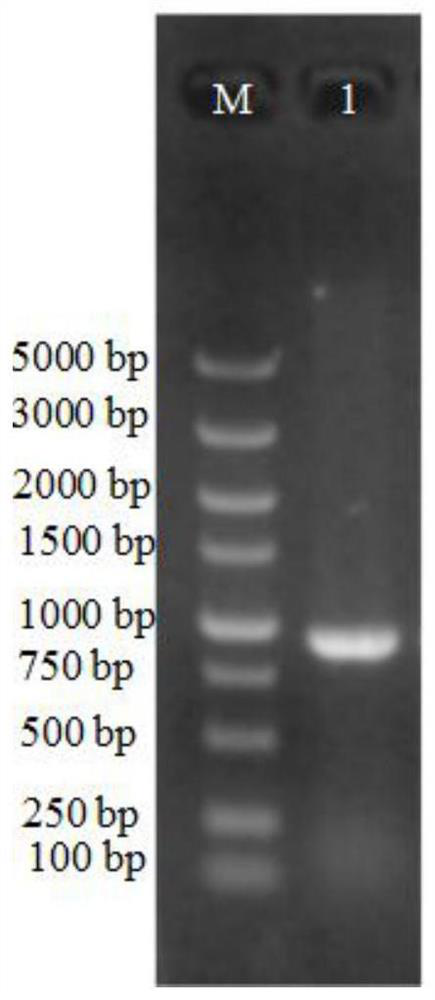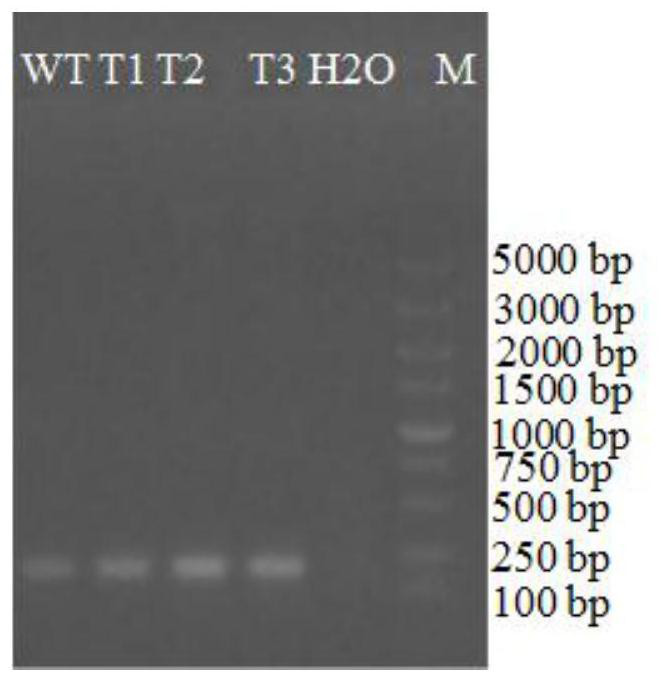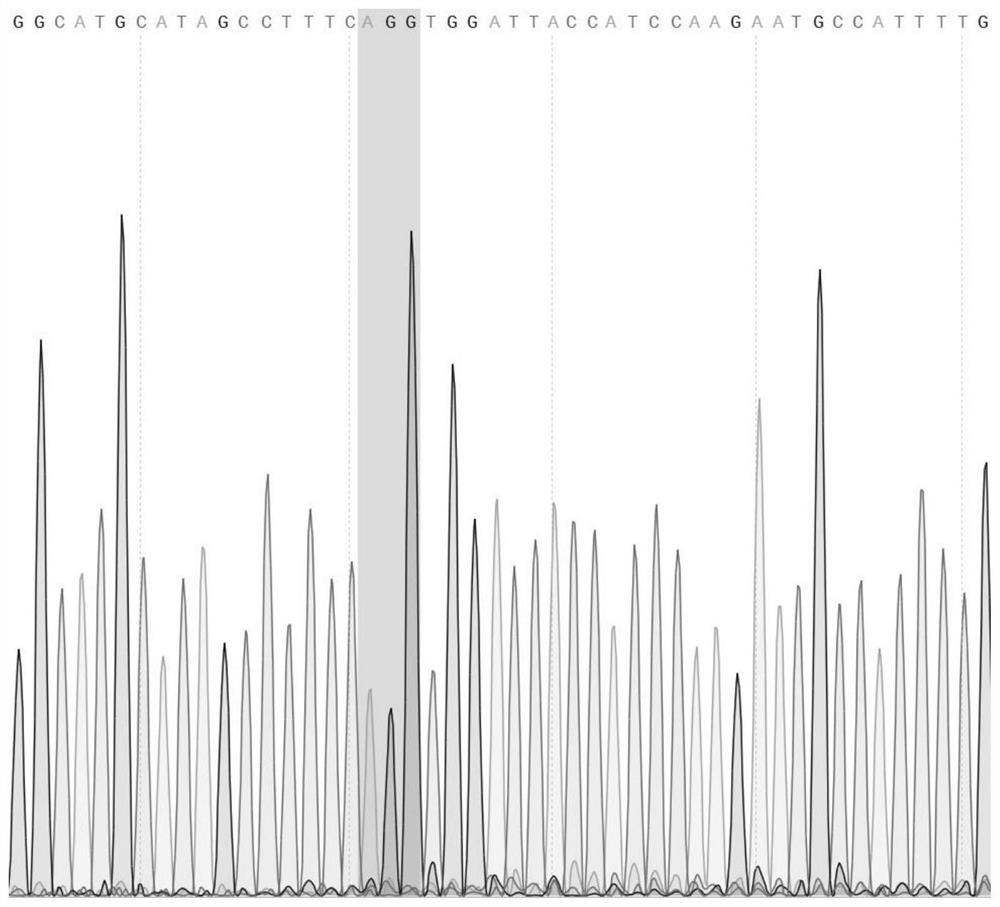CRISPR/Cas9 vector for sugarcane and construction method and application thereof
A construction method and carrier technology, applied in the field of genetic engineering, can solve problems such as polyploidy and low genetic transformation efficiency, large gene copy number, gene redundancy, etc., to improve lodging resistance, efficient site-directed mutation, and reduce plant height Effect
- Summary
- Abstract
- Description
- Claims
- Application Information
AI Technical Summary
Problems solved by technology
Method used
Image
Examples
Embodiment 1
[0041] Example 1: Acquisition of Target Sequence
[0042] According to the sorghum gene RNA series (XM_021462448.1), use Primer primer 5.0 to design and amplify the target sequence primers ZL-F and ZL-R (see the sequence table SEQ8 and SEQ9 for details), amplify the DNA template of Xintai Sugar No. 22, and amplify About 870bp target gene fragment ( Figure 5 ), the obtained PCR product was recovered from the gel, connected to the pMD18-T vector, and sequenced to obtain the target sequence (see SEQ7 for details).
[0043] The PCR amplification reaction system is as follows:
[0044] dna 0.5μL ZL-F (10μM) 1.0 μL ZL-R (10μM) 1.0 μL 2XTaq Master Mix 12.5μL ddH2O 10 μL Total Volume 25.0 μL
[0045] Amplification program: 95°C for 3.5min; 94°C for 30s, 62°C for 30s, 72°C for 50s, 33 cycles; 72°C for 7.5min.
Embodiment 2
[0046] Example 2: Construction method of CRISPR-Cas9 sugarcane target sequence editing vector
[0047] (1) Design the base sequence of the expression DNA of the specific sgRNA, as shown in SEQ ID NO.1, which is synthesized by the solid-phase phosphite amine triester method: first, the 3′ terminal nucleoside of the oligonucleotide chain to be synthesized is (N1) is coupled to a solid support with its 3'-OH through a long alkyl arm, and the 5'-OH of N1 is protected with dimethoxytrityl (DMTr); then treated with benzenesulfonic acid Nucleosides with protective groups, removing the DMTr at the 5' end, exposing the 5'-OH, the 5'-OH base and the 3'-OH of the next base form a phosphite triester, which is oxidized to triphosphate by iodine ester to obtain the second base, add dichloroacetic acid to remove the protective agent DMTr on the 5'-OH of the second base, and carry out the synthesis of the third base, and obtain the target fragment by repeating this step. The synthesis of thi...
Embodiment 3
[0058] Example 3: Genetic Transformation of Sugarcane Target Sequence Editing Vectors with CRISPR-Cas9
[0059] (1) With the Agrobacterium containing the target sequence CPB-ZmUbi-hspCas9-U6-PDS carrier constructed in Example 1, pick positive single clones in YEP liquid medium (containing 50ng / mL rifampicin, 70ng / mL kanamycin (100 μm / mL acetosyringone) at 28°C and 180 r / min for overnight shaking, and the next day, a small amount of bacterial liquid was added to fresh YEP liquid medium (containing 50 ng / mL rifampicin, 70 ng / mL kanamycin, 100 μm / mL acetosyringone) at 28°C and 180 r / min until the OD600 was about 0.3, centrifuged to remove the supernatant, and the bacteria were resuspended in MS liquid medium containing acetosyringone (100 μm / mL) at 90 rpm / Shake on a shaker for 1 min to activate the strains for the next step of callus infection.
[0060] (2) Collect the cultured sugarcane callus with pointed tweezers into a sterile petri dish with sterilized filter paper, about ...
PUM
 Login to View More
Login to View More Abstract
Description
Claims
Application Information
 Login to View More
Login to View More - R&D
- Intellectual Property
- Life Sciences
- Materials
- Tech Scout
- Unparalleled Data Quality
- Higher Quality Content
- 60% Fewer Hallucinations
Browse by: Latest US Patents, China's latest patents, Technical Efficacy Thesaurus, Application Domain, Technology Topic, Popular Technical Reports.
© 2025 PatSnap. All rights reserved.Legal|Privacy policy|Modern Slavery Act Transparency Statement|Sitemap|About US| Contact US: help@patsnap.com



